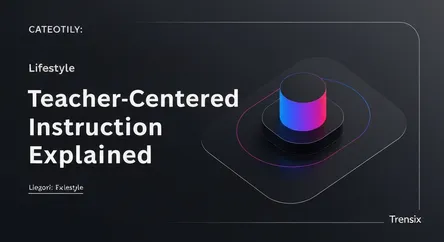Lifestyle
Teacher-Centered Instruction Explained

Explore teacher-centered instruction, a traditional model where the teacher is the primary source of knowledge and classroom authority.
What is it?
Teacher-centered instruction is a traditional educational model where the teacher acts as the primary authority and source of knowledge. In this approach, also known as direct instruction, the teacher delivers information through lectures and structured lessons, while students are primarily passive recipients. The learning environment is highly organized, with the teacher managing classroom activities, pacing, and curriculum delivery. The main goal is for students to absorb and replicate the information provided by the expert educator, often focusing on memorization and mastery of specific facts and skills.
Why is it trending?
While not a new concept, teacher-centered instruction remains a significant topic in educational debates, often contrasted with student-centered learning. Its relevance is continually renewed in discussions about foundational skills, standardized testing, and closing learning gaps. Proponents argue it is an efficient method for conveying large amounts of critical information and maintaining classroom discipline. As schools focus on core competencies and academic recovery, the structured and explicit nature of this model is often highlighted as a reliable way to ensure all students receive essential knowledge directly.
How does it affect people?
This model offers a clear, structured environment that can benefit students who thrive on predictability and explicit directions. It ensures a consistent baseline of knowledge for the entire class. However, it can also limit opportunities for students to develop creativity, critical thinking, and collaborative skills, as the focus is on passive reception rather than active engagement. For teachers, it allows for strong control over the lesson and straightforward assessment of knowledge recall. While it simplifies planning, it may not adequately address the diverse learning styles and individual needs present in a modern classroom.